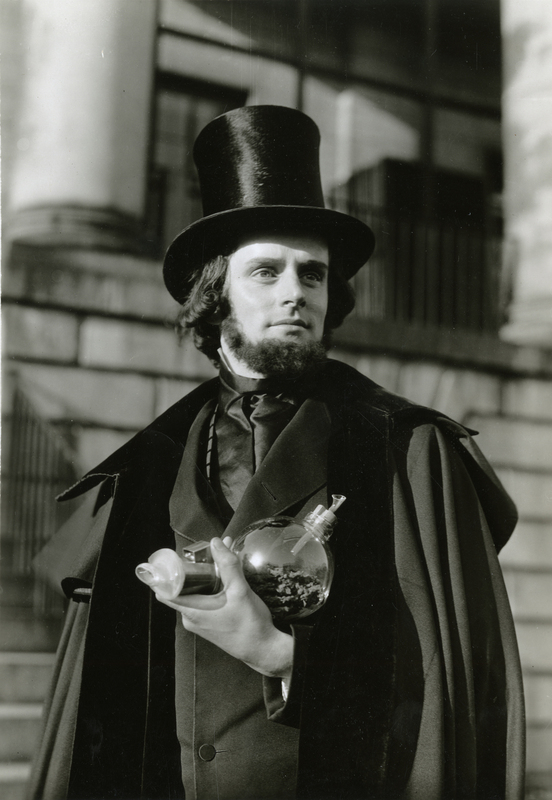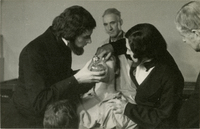The Introduction of Surgical Anesthesia
In his introductory lecture opening the winter term on November 3, 1847, the new dean of the Harvard Medical School, Oliver Wendell Holmes, touched on the formation of the American Medical Association, the proliferation of medical schools, and Boston’s place in the history of medicine. He then alluded to the most revolutionary of recent events:
In this very hour while I am speaking how many human creatures are cheated of pangs which seemed inevitable as the common doom of mortality, and lulled by the strange magic of the enchanted goblet, held for a moment to their lips, into a repose which has something of exstacy in its dreamy slumbers. The knife is searching for disease, the pulleys are dragging back dislocated limbs, nature herself is working out the primal curse which doomed the tenderest of her creatures to the sharpest of her trials, but the fierce extremity of suffering has been steeped in the waters of forgetfulness, and the deepest furrow in the knotted brow of agony has been smoothed forever.
Just one year earlier, at Massachusetts General Hospital, the first public demonstration of a surgical operation employing ether anesthesia changed medicine, surgery, and patient care in a sudden and fundamental way. Strange Magic of the Enchanted Goblet draws on the rich holdings of both the Boston Medical Library and Harvard Medical School to examine this critical event in medical history—along with its rival claimants and controversies—and outline the tangled story of the introduction of surgical anesthesia.


